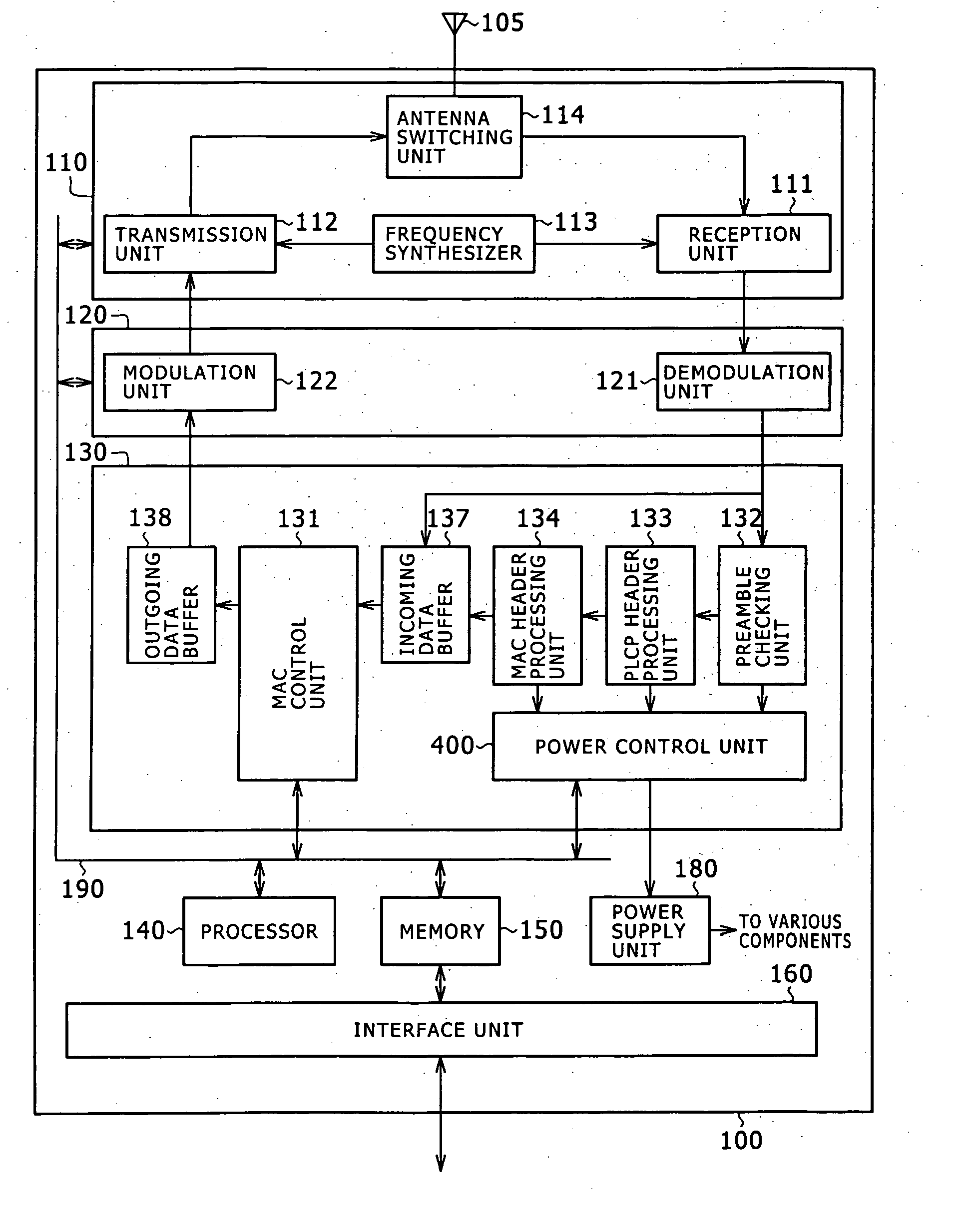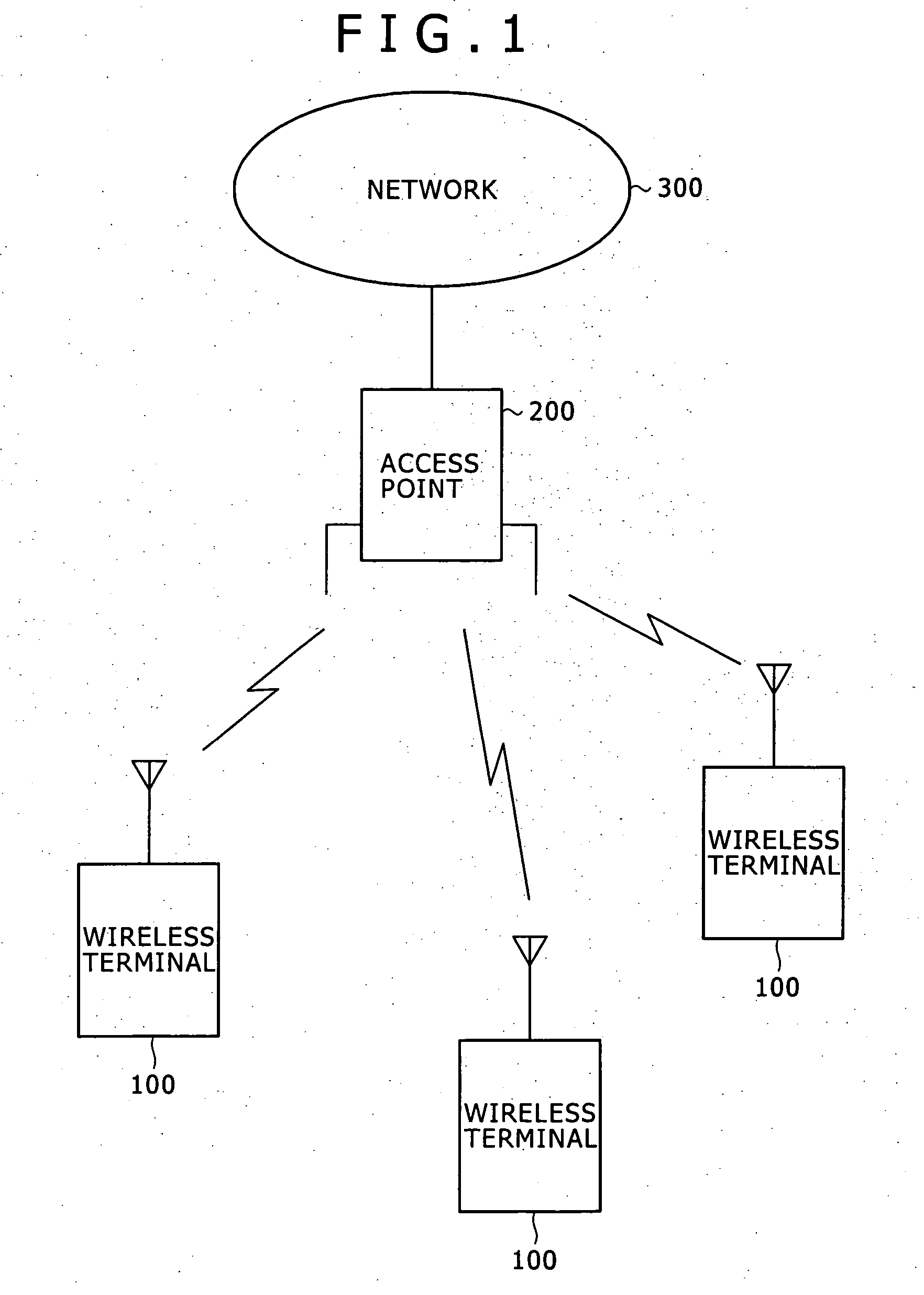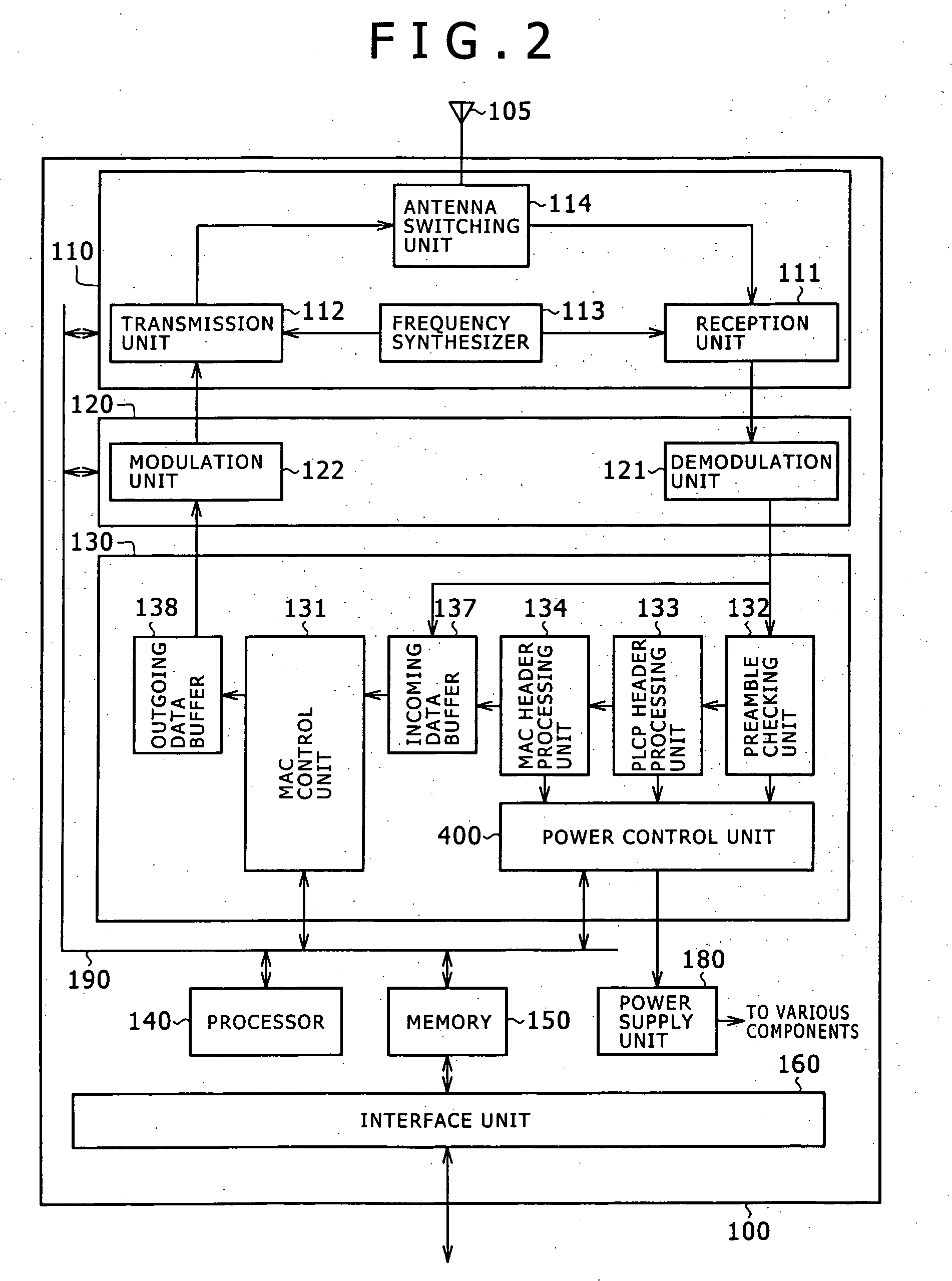Radio communication system
a radio communication and wireless communication technology, applied in the field of wireless communication systems, can solve the problem of more power consumption of terminals
- Summary
- Abstract
- Description
- Claims
- Application Information
AI Technical Summary
Benefits of technology
Problems solved by technology
Method used
Image
Examples
Embodiment Construction
[0040] Preferred embodiments of this invention will now be described in detail with reference to the accompanying drawings.
[0041]FIG. 1 is a schematic view showing a typical configuration of a wireless communication system embodying this invention. In this example, an access point 200 is wired to a network 300, and a plurality of wireless terminals 100 are connected wirelessly to the access point 200. The access point 200 and wireless terminals 100 constitute a wireless LAN that is distinct from the network 300. The setup in which a network is formed by an access point is called an infrastructure mode.
[0042] Although the example of FIG. 1 shows only one wireless LAN, a plurality of access points 200 may be connected to the network 300 in practice. In such a case, a wireless terminal 100 as part of a first wireless LAN may communicate with another wireless terminal 100 belonging to a second wireless LAN by way of the access point 200 of the first LAN, via the network 300, and throu...
PUM
 Login to View More
Login to View More Abstract
Description
Claims
Application Information
 Login to View More
Login to View More - R&D
- Intellectual Property
- Life Sciences
- Materials
- Tech Scout
- Unparalleled Data Quality
- Higher Quality Content
- 60% Fewer Hallucinations
Browse by: Latest US Patents, China's latest patents, Technical Efficacy Thesaurus, Application Domain, Technology Topic, Popular Technical Reports.
© 2025 PatSnap. All rights reserved.Legal|Privacy policy|Modern Slavery Act Transparency Statement|Sitemap|About US| Contact US: help@patsnap.com



